Municipalities manage their own elections separate from provincial elections. For municipalities, the tasks of counting the votes and running the elections are made at the municipal level. This article will focus on the provincial level where elections are run by Elections AB.
Elections AB is an independent office of the legislature. Other ministries such as Municipal Affairs do not have any impact or influence on their decisions, the use of tabulators and electronic poll books that are used in advanced polls and the recent Vote-Anywhere service are decisions made by Elections AB.
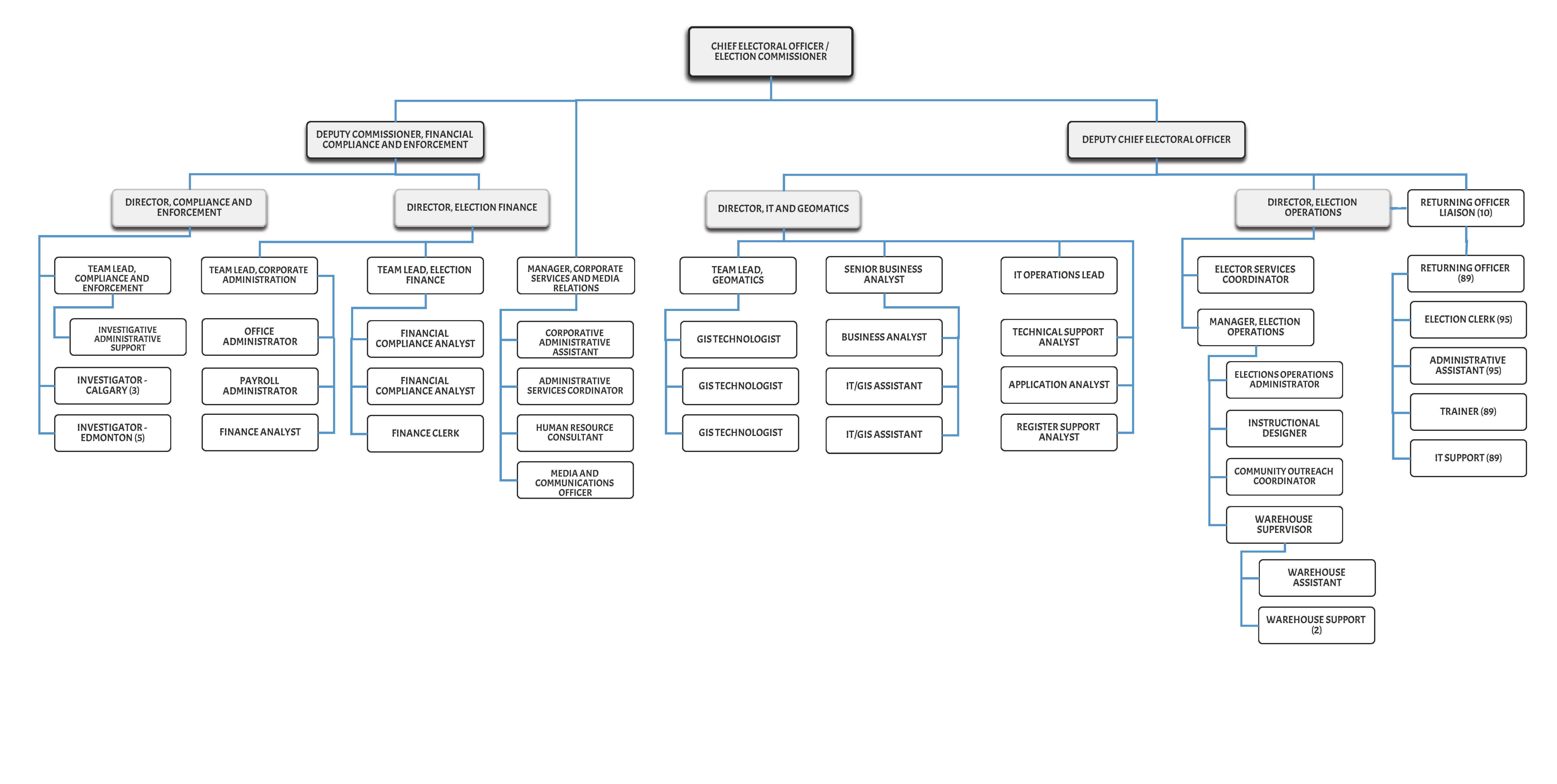
The List of Electors
Elections AB maintains a permanent register of voters updating it continuously year round however, since the passing of Bill-81, mandatory door-to-door enumeration has been removed. Before the upcoming 2023 election there will be a ‘mass register to vote’ campaign to encourage as many Albertans as possible to complete or update their registration.
For anyone who enters a polling area that hasn’t already registered, the polling staff will add any eligible voter to the register using an Electronic Poll-book (E Poll-book) with the newly acquired VoterView Express software. According to Elections AB, "this includes anyone who has recently become an Alberta citizen. All that they require is a residential lease, mortgage, or utility bill to prove their address or have their landlord complete an attestation form."
Following the election, Elections AB will complete the data entry on all new declarations to review and update the Register of Elector so everyone that takes a declaration will be on the list for the next election.
VoterView is an internet-based application software that will be used in the upcoming 2023 provincial election. Elections AB has contracted the services of Toronto based data processing company DataFix to supply the Election Management Software (EMS) called VoterView. The EMS will work with the E poll-books using the software VoterView Express that allows election staff to add, delete and adjust electors information to the register. Along with printing the ballots election staff will use VoterView Express to also update whether or not an elector has voted at the advance polls or the Vote-Anywhere system.
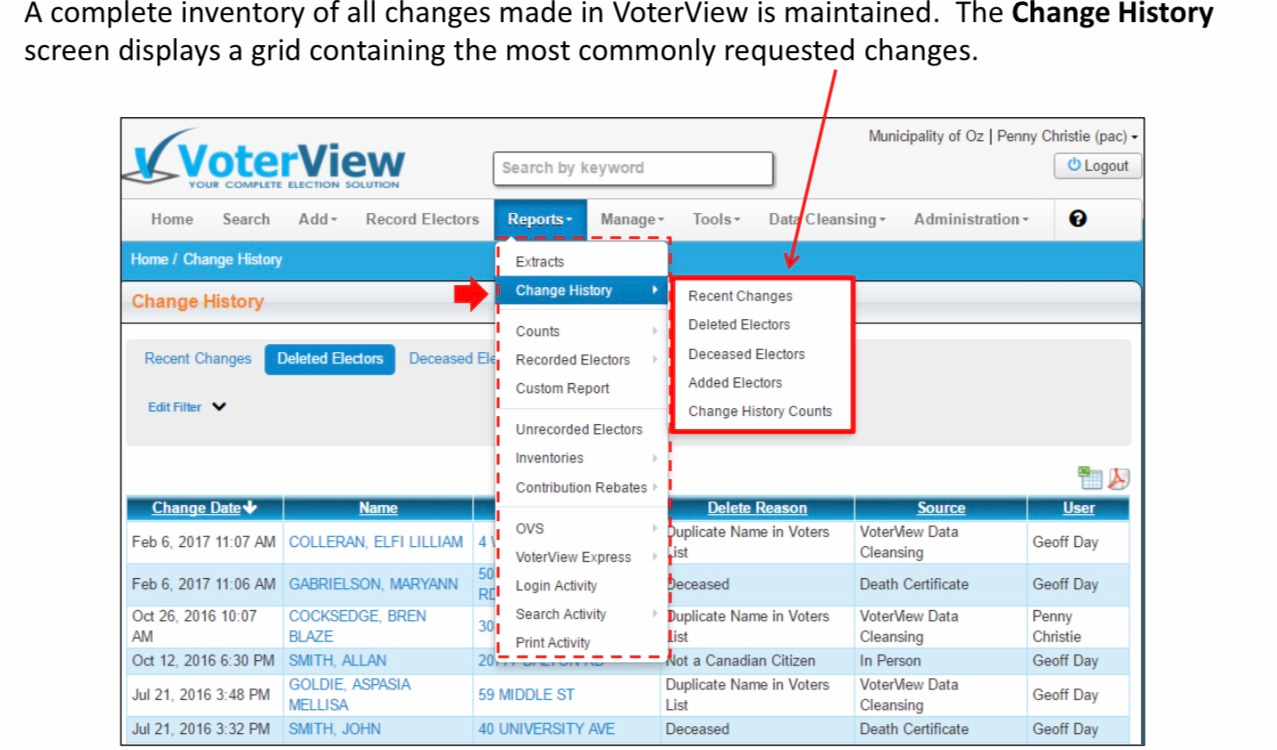
Launched in 2002, VoterView has provided election support for over 300 municipalities in at least 6 provinces and has been involved with over 500 Canadian municipal elections. Datafix is a trademark that was founded in 1992 by Comprint Systems Inc. a company that was founded ten years earlier in 1982, it is a Canadian controlled, 100% employee owned private corporation with appoximately 25 fulltime employees. Hans Wobbe is listed as the President for Comprint Systems Inc. Wobbe is also listed as the CEO of DataFix since its original inception back in 1992.

No information is available anywhere about what kind of company Comprint Systems Inc. was or what product it produced prior to the trademark Datafix, also there is no information available about what product Datafix provided or what the company did to generate revenue prior to 2002 even after multiple attempts to contact the company.
The Ballots & The Polls
There are five types of ballots in Alberta elections.
- Special Ballot is accessible only after the issuance of writ, they are a ballot available for Albertans that are outside Alberta on the day of the election. Special ballots may be mailed out as requested by the elector or may be completed in the returning office. To be counted, Special Ballot packages must be received by the returning officer by 8 p.m. on Election Day and must include the ballot, copies of elector’s identification, and a completed and signed certificate envelope.
- Mobile Ballot is provided by a mobile poll. These polls traditionally visit treatment centers and supportive living facilities; however, mobile polls can also serve shelters and community support centers with ten or more electors receiving resident or inpatient services.
- Advanced Ballot is when an elector utilizes advanced voting by having their ballot scanned and stored on a tabulator until the day of the election when the results of the votes are accessed from the tabulator by the tabulator operator. Advance polls are available to electors for five days prior to the day of the election.
- Vote-Anywhere Ballot is available to electors who access advanced polls outside of their designated polling area. The ballot is accessed and printed from the e-poll book system at the polling station that the tabulator is programed to read. During the 2019 election the vote-anywhere ballots were collected and transported back to Elections AB where they were counted by high speed tabulators. For the 2023 election, ballots will be scanned at the poll station where they will be stored on the tabulator until they are accessed on the day of the election.
- Regular Ballot is when an elector votes at their polling station on the day of the election.
Tabulator History in Alberta
Before the use of tabulators, unofficial results for ballots would end up being delayed by up to 72 hours. When tabulators were introduced the results for the ballots became available by 8:00pm on the day of the election.
Elections AB confirmed that tabulators have been used in three provincial elections dating back to the 2014 by-elections in Calgary and Edmonton. In 2019, the introduction of the Vote-Anywhere service increased use of tabulators at the advanced polls.
Tabulator companies contracted in past Alberta’s elections:
- The 2014 by-elections that occurred in Edmonton-Whitemud, Calgary-West, Calgary-Foothills and Calgary-Elbow used tabulators and voter assist terminals provided by Dominion Voting Services.
- The 2017 by-elections that occurred in Calgary-Lougheed used tabulators and voter assist terminals provided by Dominion Voting Services.
- During the 2019 Provincial General Election, ES&S provided equipment to count the vote-anywhere ballots that were cast at the advance polls.
Tabulators and Electronic Poll-Books with an Election Management System (EMS) will be used for the advanced polls and the Vote-Anywhere System in the upcoming 2023 election.
Tabulators & Electronic Poll-Books
E-poll books were used at the advance polls to support the Vote-Anywhere service. This required the use of laptops, bar code scanners, printers and tabulators. Elections AB contracts with other electoral agencies that have already invested in the acquisition and deployment of tabulation machines, renting their equipment at a significantly reduced rate. Most of the equipment was rented from Elections Ontario at a significant cost savings compared to purchase.
As ballots are cast, vote tabulators can be pre-programmed with a variety of settings to record the vote cast and store the results until the polls are closed on election night. After the polls close the tabulator operator retrieves a printout of the votes by turning a key and pushing a button to produce a results tape. Here are links to the manual from Elections AB or the manual from ES&S for the DS200 tabulator.
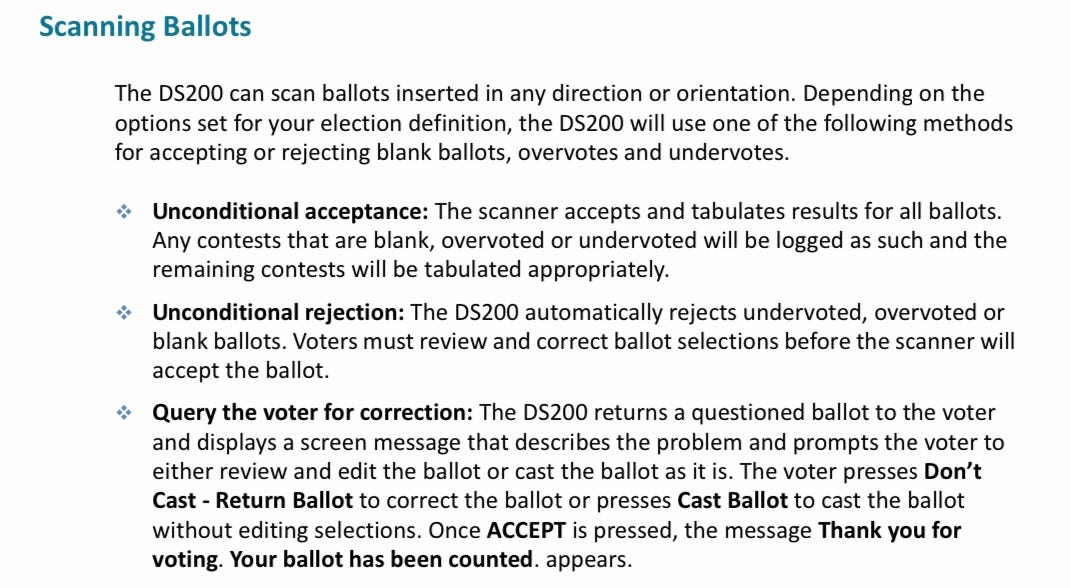
The ES&S DS200 is a portable EAC certified, high resolution optical scanner & vote tabulator that is used in elections throughout North America. The DS200 is tasked with reading marked paper ballots that can be printed and immediately tabulated at the polling location by working in conjunction with electronic poll-books and onsite printers.
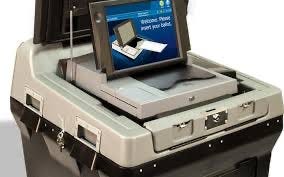
Elections Systems & Software (ES&S) is a company with its headquarters in Omaha, Nebraska that is 100% owned by the investment firm McCarthy Group LLC, an organization that is also based out of Omaha. The McCarthy Group originally partnered with the founders of ES&S in 1987 one year after the McCarthy organization was founded in 1986. The founder of McCarthy Group, Michael McCarthy who is also the on the Board of Directors for ES&S is also a director with the Omaha based company, Government Systems Software & Services, Inc. a company that offers support for sales of electronic election equipment.
The ES&S DS200 has a history of questionable issues that have been reported to various commissions, investigators and auditors however there is only so much that can be understood about the DS200. The system & method for decoding marks on a paper ballot is proprietary information and considered intellectual property based on patent law, however some concerns have been documented as follows:
- Jake Stauffer, Former cyber analyst for the U.S. Air Force November 4, 2016
- Vulnerability & Security Assessment Report on the flash cards unencrypted file system.
- An SSH server was discovered installed on the DS200 that allows remote root user logins/passwords; the password was cracked within 46 seconds.
- Vote tallies are written in plain text (unencrypted) & the ballot images are stored in an unencrypted bitmap format.
- John Brakey, Executive Director (AUDIT) December 12, 2016
- Jeremy Lovato, Director Voting System Testing & Certification EAC January 17, 2020
- Jeremy Lovato’s email from Steve Person, VP of Certification for ES&S stating that ‘modeming’ is possible in the ES&S DS200.
- Matt DePerno, Attorney, Candidate for the Michigan GOP leadership. April 9, 2021
- Evidence from DePerno’s lawsuit, Exhibit 6 shows that the DS200 has an integrated Telit 4g modem installed on the motherboard within the enclosure of the machine.
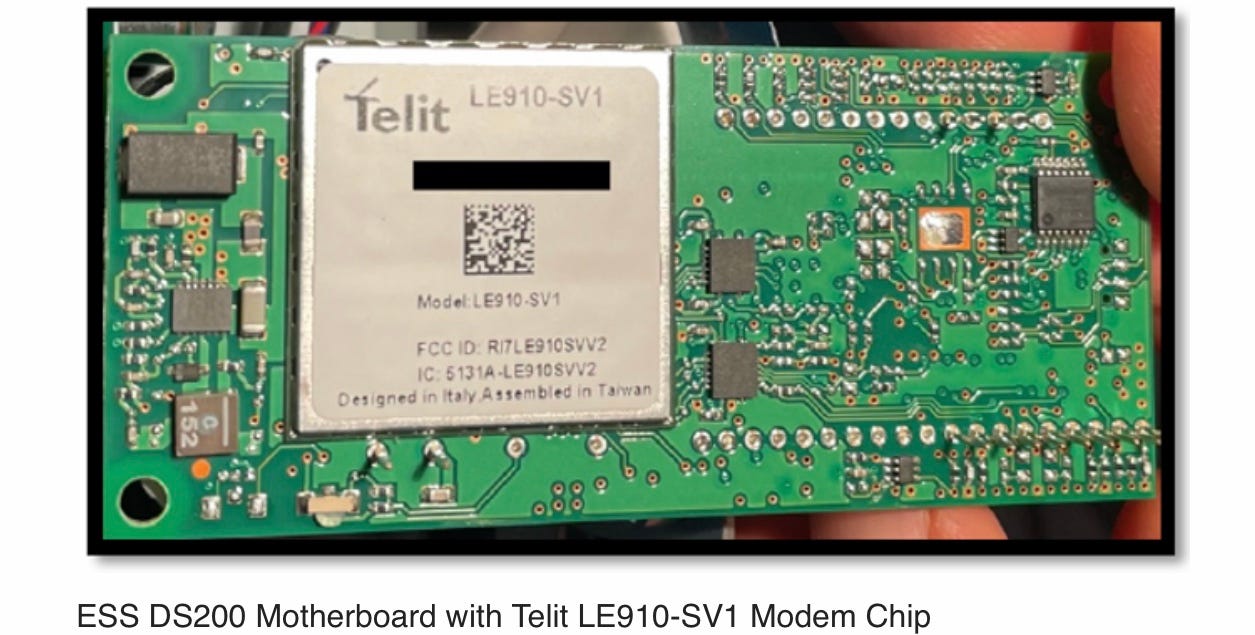
- Brittany GervaisCalgary Herald October 2021
- A report about the Calgary Municipal Election that had multiple issues of battery failure that caused some voters to deposit their ballots in a box that would be counted later.
- There was also issues with improperly constructed ballot boxes that had the possibility for ballots going into the auxiliary slot creating a potential for processed & unprocessed ballots being mixed.
When Elections AB was asked if the tabulators used in the elections for Alberta were capable of modeming, Elections AB couldn’t confirm either way if modeming is possible but assured that the tabulators would not be connected to the internet and that results would be printed directly from the tabulator.
Electronic Poll-Books are electronic devices running a software application that manages the list of approved voters for an electoral region. Polling staff use the E poll-book data to look up and validate individuals who present themselves to vote.
The E poll-books that are used in Alberta’s provincial elections are windows based laptops that are capable of operating in both a network or a standalone environment. The E poll-book is normally connected to a network that shares voter information across all other laptops at other poll stations. If there is a disruption in the network, the E poll-book can function in a standalone mode and synchronize with the network once the connection is restored.
In February 2022, The Government of Canada’s Center for Cyber Security (CCS) released a publication that examines the threats involved with the use of E poll-books. CCS warns of the convenience of wireless networks making them attractive targets for bad actors and organizations.
Unofficial vs Official Results
On the evening of the election the task of counting the ballots begins after the polls close at 8:00pm. At the close of the polls the elections staff complete the unofficial count of all the ballots cast, these unofficial results are then posted to Election AB’s website after the counting is done. Following the day of the election, the Returning officer and election staff begin the task of a full manual recount of all the ballots cast in their division, the official results are reported ten days after the day of the election.
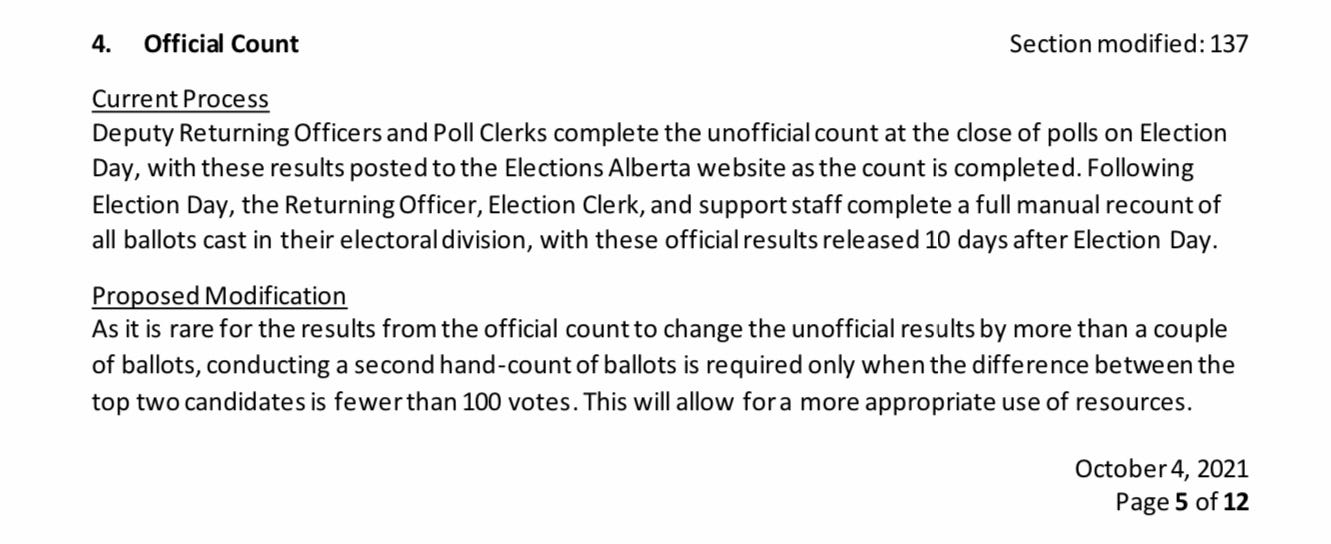
October 4, 2021, Chief Elections Officer Glen Resler submitted a request to the Standing Committee on Legislative Offices to approve a process for testing new equipment and procedures, they would be tested in the pending Fort McMurray-Lac La Biche by-election. A request was made to change the definition and procedure of the official results by conducting a second hand-count of all ballots only when there is a difference of 100 votes or less between the top two candidates.

On December 8, Bill-81 The Election Statutes Amendment Act was given royal ascent. Within the 116 pages of amendments, (109) section 137 was amended to substitute the the requirement of a full hand-count only when there is a difference of 100 votes or less between the top two candidates.
A fixed election day is set for the last Monday of May, 2023 when the province will have the next Alberta Provincial General Election. As of June 30, 2022 the deadline for any submissions to be considered for amendments to the Election Act have passed. The next opportunity to submit suggestions will happen after the 2023 Provincial Election.